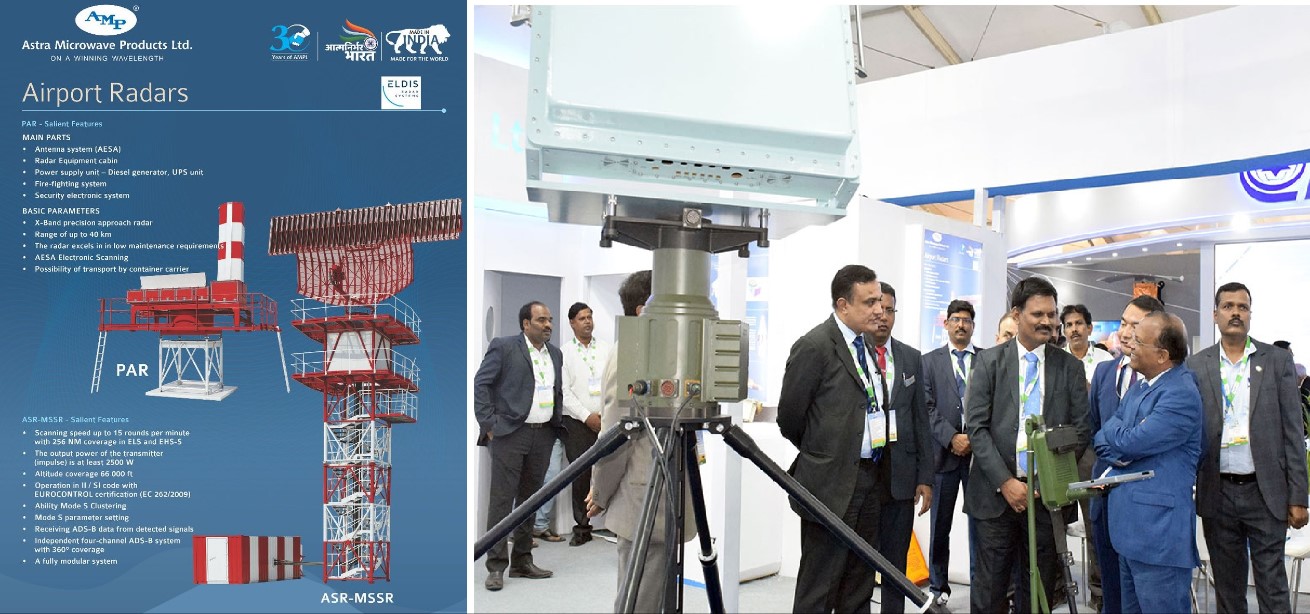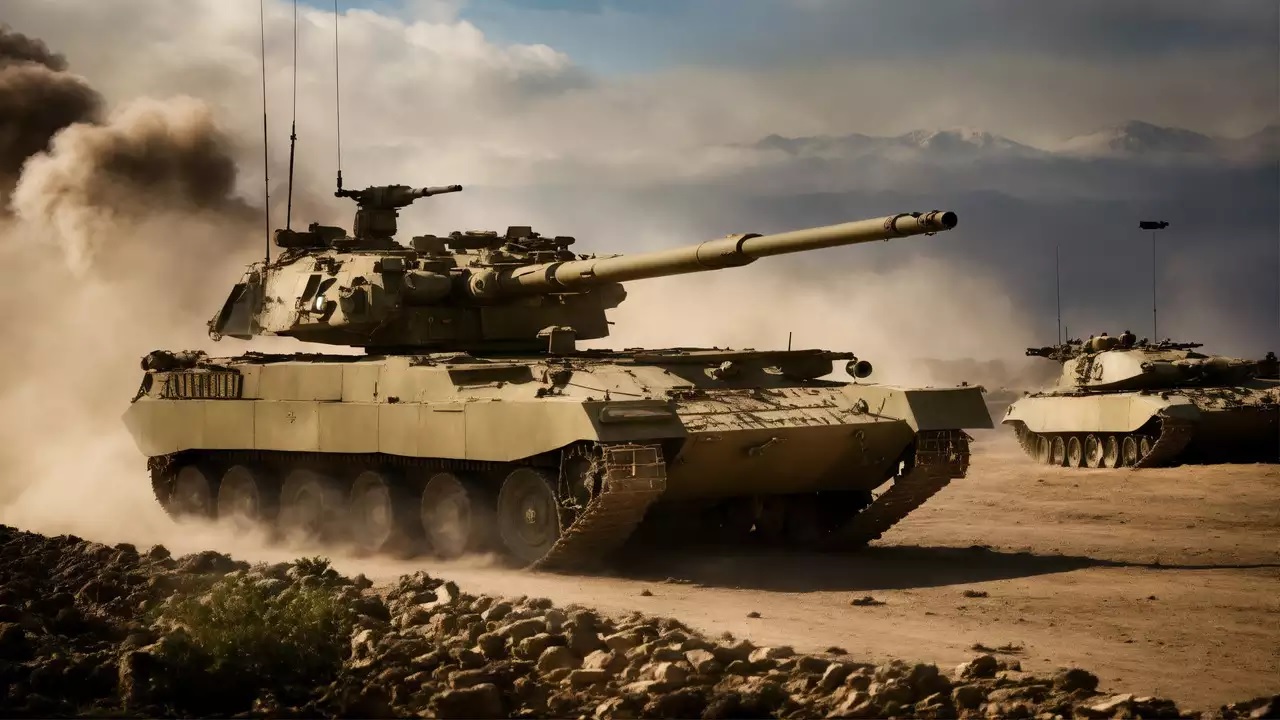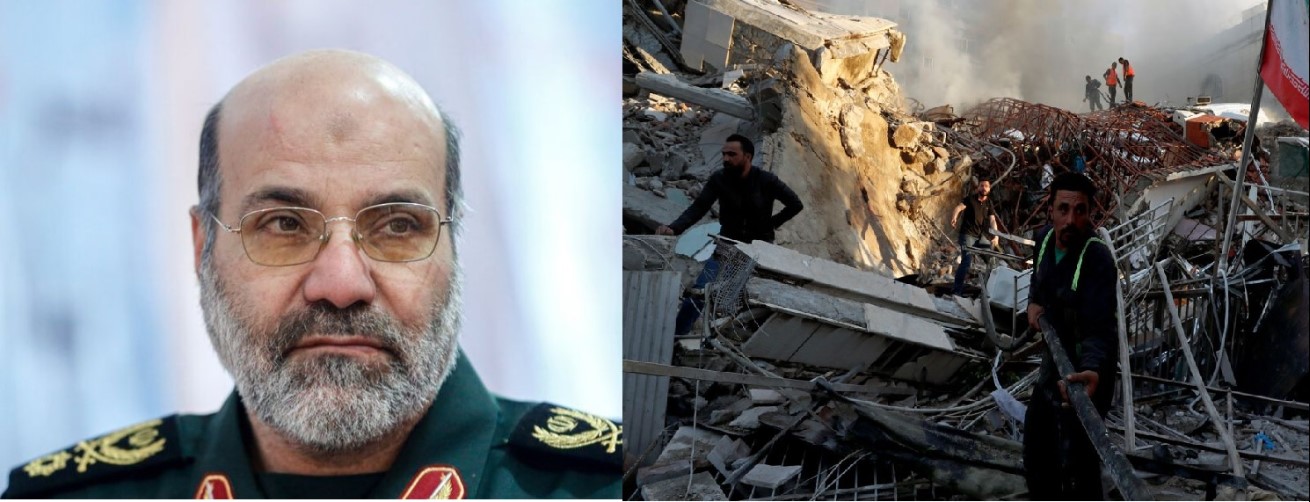World
Defense NewsGermanyGermany has pledged to fund 180,000 rounds of artillery shells as part of a Czech-led effort to provide Ukraine with ammunition. Reuters reported the total cost of Germany's contribution to be EUR 576 million, signaling a substantial financial commitment to bolster Ukraine's defense capabilities against Russian forces.This announcement comes amidst Germany's ongoing support for Ukraine, particularly in light of delays in military aid from the US and under-delivered EU pledges. These promises aimed to provide a million shells to aid Kyiv in sustaining its defense along the extensive 1,000-kilometer front line.Artillery fire holds a critical role in the conflict dynamics between Ukraine and Russia, underscoring the significance of this assistance.Last month, German Defence Minister Boris Pistorius unveiled a EUR 478 million aid package for Ukraine. Notably, this package did not initially include support for the Czech ammunition initiative, sparking discussions on Germany's stance and contributions.During a press conference at the Contact Group on Ukraine's Defence on 19 March, Pistorius emphasized the substantial scope of the aid. This includes 10,000 artillery shells, 100 armored infantry vehicles, 100 transport vehicles, and the planned purchase of 180,000 artillery shells through the Czech-led initiative.A spokesperson from the German Defence Ministry highlighted that the combined value of both support measures exceeds one billion euros, marking a significant milestone in Germany's support for Ukraine amid the ongoing conflict.
Read More → Posted on 2024-04-03 07:49:15World
Defense NewsIsrael & IranFor decades, Israel and Iran have fought a shadow war across the Middle East, trading attacks by land, sea, air and in cyberspace.Iran has largely used foreign proxies to strike Israeli interests, while targeted assassinations of Iranian military leaders and nuclear scientists have been a key part of Israel's strategy.Israel's strike in the Syrian capital, Damascus, that killed three top Iranian commanders Monday was the most brazen attack in years, raising fears of a wider confrontation. That would be particularly dangerous in a region already in turmoil on multiple fronts, including Israel's war in the Gaza Strip, cross-border skirmishes between Israel and the Lebanese militant group Hezbollah and attacks by Yemen's Houthi militia against Western interests in the Red Sea. An escalation between Israel and Iran would also risk further entangling the United States, given the presence of U.S. troops in the region.Here are some key moments in the years-long conflict.January 2020: A Major TargetThe assassination of Gen. Qassem Soleimani, commander of the foreign-facing arm of Iran's Revolutionary Guard, in a U.S. drone strike in Baghdad was greeted with satisfaction in Israel.Iran hit back by attacking two bases in Iraq that housed U.S. troops with a barrage of missiles, injuring about 100 U.S. military personnel.U.S. officials accused Soleimani of causing the deaths of hundreds of soldiers during the Iraq War. They also said that he was behind destabilizing Iranian activities throughout the Middle East and that he was accused of plotting attacks against U.S. embassies and Israeli targets.The general had built a network of allied militias to defend Iran's interests across the Middle East and to counter the United States and Israel.October 2023: Tit-for-Tat Strikes Before Oct. 7Iran and Israel reportedly carried out a number of covert attacks and counterattacks in the years following Soleimani's death.Israel killed Iran's top nuclear scientist, Mohsen Fakhrizadeh, in November 2021, and followed up with the assassination of a Revolutionary Guard commander, Col. Hassan Sayyad Khodaei, in May 2022.In July 2021, an oil tanker managed by an Israeli-owned shipping company was attacked off the coast of Oman, killing two crew members, according to the company and three Israeli officials.Two of the officials said the attack appeared to have been carried out by several Iranian drones that crashed into living quarters underneath the ship's bridge. Iran did not explicitly claim or deny responsibility, but a state-owned TV channel described the attack on the ship as a response to an Israeli strike in Syria.Once Israel's bombardment of Gaza began after the Hamas-led attacks on Oct. 7, Iranian-backed militias stepped up their attacks.December 2023: Another High-Profile KillingAt the end of last year, Iran accused Israel of killing a high-level military figure, Brig. Gen. Seyed Razi Mousavi, in a missile strike outside Damascus. A senior adviser to the Revolutionary Guard, Mousavi was described as having been a close associate of Soleimani and was said to have helped oversee the shipment of arms to Hezbollah.Israel, adopting its customary stance, declined to comment directly on whether it was behind Mousavi's death.January 2024: Back-and-Forth Attacks Ratchet UpThe Pentagon launched a drone strike in Baghdad that killed a senior figure in an Iran-linked militant group.The attack came days after an explosion in a suburb of Beirut that killed Saleh Arouri, a Hamas leader, along with two commanders from that group's armed wing. The blast was the first such assassination of a top Hamas official outside the West Bank and Gaza in recent years.Officials from Hamas, Lebanon and the United States ascribed the attack to Israel, which did not publicly confirm involvement.Arouri was the most senior Hamas figure to be killed since Israel vowed to destroy the organization after Oct. 7.Hezbollah, which receives major support from Iran, stepped up its assaults on Israel after Arouri's death. Israel's military hit back at Hezbollah in Lebanon, killing a number of the group's commanders.Later in January, Iran accused Israel of launching an airstrike on Damascus. A number of senior Iranian military figures were killed, including the head of intelligence in Syria for the overseas arm of the Revolutionary Guard and his deputy, according to the Iranian news media and an Israeli defense official.Then, a drone strike by an Iran-backed militia killed three U.S. service members and injured at least 34 others in Jordan. Ten days later, U.S. forces launched a retaliatory drone strike in Baghdad that killed a senior militia leader that U.S. officials blamed for the attacks on U.S. personnel.February 2024: Further Strikes by IsraelThe United States' retaliatory airstrikes against Iran-backed militias appeared to temper Iran's actions.Israel was blamed for a number of attacks in Syria and Lebanon. In February, Syrian state news media said Israel was behind an airstrike on a residential building in Damascus that killed two people.The Israeli military declined to comment on that strike, though it has acknowledged hundreds of past strikes on Iran-linked targets in Syria.But the Israeli military did acknowledge a strike in southern Lebanon in February that it said killed a Hezbollah commander, and in March, it killed a senior Hamas operative in an airstrike also in southern Lebanon.March 2024: A Tense AtmosphereAn Israeli drone strike targeted a car in southern Lebanon, killing at least one person. Israel's military said it had killed the deputy commander of Hezbollah's rocket and missile unit. Hezbollah acknowledged the death of a man, Ali Abdulhassan Naim, but did not provide further details.The same day, airstrikes killed soldiers near Aleppo, in northern Syria, in what appeared to be one of the heaviest Israeli attacks in the country in years.Those strikes killed 36 Syrian soldiers, seven Hezbollah fighters and a Syrian from a pro-Iran militia, according to the Syrian Observatory for Human Rights, a British-based group that tracks Syria's civil war.Israel's military did not claim responsibility. However, the country's defense minister, Yoav Gallant, wrote on social media, "We will pursue Hezbollah every place it operates and we will expand the pressure and the pace of the attacks."Three days later, on Monday evening, Israeli warplanes struck the building in Damascus in the attack that killed the three top Iranian commanders.This article originally appeared in The New York Times.
Read More → Posted on 2024-04-03 07:45:34India
Defense NewsIndiaAround 14,000 new Kashmiri Pandit migrant voters have registered for the three Lok Sabha seats in the valley, bringing the total figure to 1.13 lakh, as per the Relief and Rehabilitation Department. This surge marks a notable increase since the 2019 Lok Sabha polls when approximately 99,000 migrant Kashmiri Pandits were registered as voters, with the BJP securing 86% of their votes.Migrant Pandits are those who fled the Kashmir valley during the mass militancy of the 1990s. According to government figures, 60,000 families migrated due to militant violence, including 40,142 Hindu families, 2,684 Muslim families, and 1,730 Sikh families.Relief and Rehabilitation Commissioner Arvind Karwani urged migrant voters to participate in large numbers and exercise their democratic right. Facilities have been arranged, with authorized officers distributing and attesting M-forms on the spot.The Relief and Rehabilitation Department has been conducting special awareness camps for Kashmiri migrants, particularly Pandits, in various locations like Jammu and Udhampur, to inform them about the voting scheme allowing them to cast votes from outside the Kashmir valley.Migrant voters have two options: filling out an M-form to vote in special polling booths or casting votes through postal ballots using Form-12C. Twenty-six polling stations, including 21 in Jammu, four in Delhi, and one in Udhampur, have been set up for Kashmiri Pandit migrant voters.Special awareness drives are underway in migrant camps and non-camp areas with concentrations of Kashmiri migrants in Jammu and Delhi to ensure maximum participation.With these developments, the electoral landscape for the upcoming Lok Sabha polls reflects the growing engagement of Kashmiri Pandit migrant voters in the democratic process.
Read More → Posted on 2024-04-03 07:42:14World
Defense NewsTaiwanA devastating earthquake measuring 7.3 on the Richter scale struck the east coast of Taiwan at 7:58 am on Wednesday, resulting in significant loss of life and widespread damage. According to reports, at least seven people have lost their lives, while 711 others have been reported injured.The earthquake's epicenter was located approximately 25 kilometers south of Hualien, a county in eastern Taiwan, with its impact felt across the entire island. Buildings collapsed, and residents ran in panic as the ground shook violently for nearly a minute.Among the casualties, three hikers lost their lives due to falling rocks at the Dekalun Trail in Taroko National Park, while a truck driver was killed when his vehicle was crushed by rocks near a tunnel in Hualien. In addition, more than 40 people, mostly tourists, were injured in Taroko Park, and hundreds were evacuated.In various parts of Taiwan, at least 50 individuals were injured either by falling objects or as a result of the earthquake's impact. Search and rescue operations are underway, with 22 people rescued from a collapsed eight-storey building in Hualien, while five remain trapped and one person is reported missing.The earthquake caused extensive damage to infrastructure, with reports of damaged walls, falling bricks, and debris across the island. A total of 125 buildings and houses have been reported damaged, including seven houses in New Taipei that collapsed due to foundation damage.Taiwan's transportation network also suffered, with several mountain sectors of highways closed due to partial collapses or blockages from fallen rocks. However, Taiwan's high-speed rail services remain unaffected, with no reports of damage or injuries.The earthquake's impact extended beyond Taiwan, with disruptions in the semiconductor industry, as major companies like Taiwan Semiconductor Manufacturing Co (TSMC) evacuated factory areas and partially shut down operations as a preventive measure. Other companies such as Powerchip Semiconductor Manufacturing Co and Innolux also took similar precautions.In response to the disaster, Taiwan's President Tsai Ing-wen has called for military support in rescue missions, while Vice-President William Lai Ching-te urged the public to remain calm and cautious. However, there has been no confirmation regarding the postponement of the upcoming presidential inauguration scheduled for May 20.The earthquake marks the most significant seismic event in Taiwan since 1999, with its impact felt in neighboring regions such as Japan and mainland China. Authorities have issued tsunami warnings, with aftershocks of up to magnitude 7 expected in the coming days, according to Taiwan's Central Weather Bureau.
Read More → Posted on 2024-04-03 07:32:36India
Defense NewsRussiaRussia has made significant strides in aerial combat technology, with the United Aircraft Corporation (UAC) securing a patent for an innovative air-launched attack drone designed for the Su-57 fighter jet. This development could potentially change the landscape of aerial warfare tactics.While details of the drone remain classified, leaked patent documents shed light on its capabilities. The drone is intended to augment the Su-57's range and combat effectiveness, with speculation suggesting it could be used for high-risk missions.One notable feature of the drone is its advanced autonomy, which operates in two modes. In the first mode, the drone can autonomously identify and engage targets based on preset criteria. In the second mode, it acts as a scout, relaying tactical information to the Su-57 pilot for decision-making.The drone is equipped with a modular warhead system, allowing it to be fitted with various payloads tailored to specific mission requirements. These payloads can include high-explosive or hybrid warheads, enhancing the drone's versatility.Although initially designed for the Su-57, there is potential for this technology to be adapted for other Russian combat aircraft. Such a move could significantly enhance Russia's airpower capabilities.Russia's development of this air-launched attack drone represents a notable advancement in aerial combat technology, with potential implications for future military operations.
Read More → Posted on 2024-04-03 07:21:29Space & Technology
Space NewsIndiaCoimbatore-based Lakshmi Machine Works Advanced Technology Centre (LMW ATC) has recently completed the delivery of a 5-meter diameter Ogive Payload Fairing to the Indian Space Research Organisation (ISRO) for the GSLV MK-III. This payload fairing, constructed by LMW's metallic and composites divisions, plays a crucial role in transporting satellites into orbit. Made from carbon composites, it stands at a height of 10.75 meters.Sanjay Jayavarthanavelu, the Chairman and Managing Director of LMW, officially handed over the hardware documents to ISRO Chairman S Somanath. The unveiling ceremony of the payload fairing was conducted virtually, showcasing the collaboration between LMW and ISRO in advancing space technology.LMW-ATC's contributions extend beyond the Ogive Payload Fairing. In February, the company delivered a "4-meter diameter hat stiffened composite equipment bay shroud" essential for the upcoming Gaganyaan Mission. Additionally, LMW-ATC undertook assembly, structural testing, and non-destructive testing of composite tubular members for the Inter Tank Structure of the C-25 cryogenic upper stage, which is vital for Chandrayaan-3.These developments underscore LMW's commitment to supporting India's space exploration endeavors through the provision of high-quality aerospace components and technology.
Read More → Posted on 2024-04-03 07:15:17World
Defense News North KoreaNorth Korea successfully test-fired a new hypersonic missile, state news agency KCNA said on Wednesday, the latest step in a plan its leader Kim Jong Un described as aimed at using solid fuel to power its entire range of missiles.The North is developing missiles and nuclear weapons undeterred by sanctions in the wake of U.N. Security Council bans, while analysts say solid-fuel missiles can be faster to deploy than liquid-fuel variants.It drew swift condemnation from neighbours South Korea and Japan, as well as the United States for firing the intermediate-range ballistic missile (IRBM) into the sea on Tuesday.Kim oversaw the launch of the new Hwasong-16B missile, KCNA said, calling it a strategic weapon showcasing the "absolute superiority" of the North's defence technology.It perfects the North's project for "putting all the tactical, operational and strategic missiles with various ranges on solid-fuelled, warhead-controlled and nuclear warhead-carrying basis," Kim said, according to KCNA.That would give North Korea the capacity for "rapidly, accurately and powerfully striking any target in the enemy side worldwide," Kim said.Analysts said it was unclear if the North would exclusively use solid-fuel missiles in future, and what the switch would mean for its arsenal of liquid-fuel weapons, such as its largest Hwasong-17 and Hwasong-15 intercontinental ballistic missiles (ICBMs).North Korea may heavily favour solid-fuel systems where possible, but actually phasing out liquid-fuel weapons is likely to play out over years, said Ankit Panda of the U.S.-based Carnegie Endowment for International Peace."There are obvious strategic advantages to an all-solid-fuel force for them in the form of greater promptness, responsiveness, and survivability," he added.North Korea would need to have high confidence in its production capabilities to allow solid-fuel missiles to sit for a number of years, during which they may develop imperfections that lead to in-flight failures, Panda added."India and other countries have had problems with this sort of thing with solid-fuel missiles," he said. "Liquid-fuel missiles, despite their strategic disadvantages, don't face this particular long-term handling problem."A move away from liquid fuel would be surprising, given recent state media coverage of such weapons, but would make sense if North Korea wants an extremely responsive missile force, said Decker Eveleth of the James Martin Center for Nonproliferation Studies in California."Solid-fuel missiles are much, much faster to get off the ground in an emergency," he said in a post on X.Such a shift could also see North Korea place some ICBMs in silos, in addition to the mobile launch vehicles it has exclusively used so far, Eveleth added.North Korea's pursuit of hypersonic vehicles helps its broader effort to field warheads tougher to intercept.Warheads typically launched by such missiles travel at more than five times the speed of sound or about 6,200 kph (3,850 mph), often manoeuvring at relatively low altitudes.That manoeuvrability, not speed, is the most attractive feature of such weapons, analysts say, as the latter can sometimes be matched or exceeded by traditional ballistic missile warheads.Tuesday's launch, which followed a ground test late in March of a solid-fuel engine for a new type of intermediate-range hypersonic missile, was also condemned by Britain, which said it breached UN Security Council resolutions.
Read More → Posted on 2024-04-03 07:08:44India
Defense News IndiaThe ongoing conflict in Ukraine has raised eyebrows once again, as images from the warzone point to the use of Indian-manufactured ERFB-BT 155mm artillery shells by Ukrainian forces. This discovery has sparked renewed debate about India's stance of neutrality in the conflict.Reports indicate a surge in demand for ERFB-BT 155mm shells produced by India's Defence Public Sector Undertakings (DPSUs) and private companies. Orders worth over ₹2,000 crores have been placed, primarily by countries in the Middle East and the United States.Despite India's official position of neutrality in the Russia-Ukraine conflict and its avoidance of direct weapon supply to either side, evidence suggests an indirect supply chain exists. It is likely that nations purchasing Indian-made shells are subsequently transferring them to Ukraine.The attractiveness of Indian shells lies in their compatibility with NATO-standard artillery systems recently deployed in Ukraine. This makes them a valuable asset in the ongoing conflict.India's involvement, albeit indirect, underscores the complexities of global arms trade and the challenges of maintaining neutrality in conflicts with far-reaching implications. As the conflict continues, the role of nations like India in supplying military equipment will undoubtedly remain under scrutiny.
Read More → Posted on 2024-04-03 07:06:01World
Defense NewsWorldBelgian Defence has recently made a purchase of six R7 Remotely Operated Vehicles (ROVs) from Exail. These cutting-edge underwater vehicles are set to greatly enhance the capabilities of the Belgian Armed Forces, particularly in the areas of inspecting and disposing of underwater explosive ordnance (EOD), as well as safeguarding harbors, coastal areas, ships, and key infrastructures.Nicolas Astruc, Managing Director of ROV at Exail, expressed gratitude to the Belgian Defence for their trust in selecting the R7 ROV. He highlighted the R7's capabilities in critical infrastructure protection, explosive ordnance disposal, and inspection missions up to 300 meters deep. This acquisition from Belgium, known for its expertise in underwater operations, further validates the R7's effectiveness.According to the Belgian Defence, the introduction of ROV R7s into the Belgian Navy signifies a significant advancement in protecting Belgian waters. These ROVs will be instrumental in tasks such as underwater EOD inspection and removal, as well as ensuring the security of ports, coastal areas, ships, and vital infrastructures. The move reflects the Navy's ongoing commitment to enhancing its capabilities and ensuring the safety of its personnel and the environment they operate in.The R7 ROV is characterized by its cost-efficiency, compact size, and versatility. It is easily deployable and operable from small boats like RHIBs or from the shore. Equipped with a robotic arm and capable of carrying multiple payloads, the R7 is adaptable to a wide range of missions.For EOD neutralization missions, the R7 comes equipped with a special payload featuring a neutralization charge. Its precise positioning is ensured by embedded INS, DVL, and USBL sensors. Additionally, the ROV is equipped with a multibeam sonar and an Orphie 12S camera, facilitating accurate target detection and identification even in challenging conditions.In conclusion, the acquisition of the R7 ROVs by the Belgian Defence signifies a practical step towards bolstering their underwater capabilities. With their advanced features and versatility, these ROVs are expected to play a crucial role in enhancing security and safety in Belgian waters.
Read More → Posted on 2024-04-02 16:35:12Space & Technology
Space NewsWorldNASA's Parker Solar Probe has made a groundbreaking discovery, offering scientists a rare glimpse inside a coronal mass ejection (CME) as it erupted from the sun. These CMEs, massive clouds of plasma, are known to cause both stunning auroras and disruptive effects on electrical grids and satellites when they interact with Earth.(Image credit: U.S. Naval Research Laboratory)The probe's Wide-field Imager for Parker Solar Probe (WISPR) captured clear images of turbulent eddies within the CME. These eddies, known as Kelvin-Helmholtz instabilities (KHI), occur when fast-moving fluid patches interact with each other. Similar phenomena are observed on Earth in cloud formations when there's a difference in wind speed at different ends of a cloud.Solar physicists have long suspected the existence of KHI in CMEs, as plasma within these eruptions moves differently from the background solar wind. However, until now, they lacked the necessary equipment in the right location to observe them directly.According to Evangelos Paouris, a solar physicist at George Mason University, understanding turbulence, which gives rise to KHI, is crucial for comprehending the dynamics of CMEs as they interact with the solar wind.The Parker Solar Probe, launched in August 2018, has been able to venture closer to the sun's corona than any previous spacecraft. Its elliptical orbit has enabled it to come within just 11.5 solar radii from the sun's surface, essentially entering the sun's outer atmosphere.Even now, the Parker Solar Probe has not completed its final orbit. It has utilized gravity assists from Venus to increase its speed and tighten its orbit around the sun. In November of this year, the probe will make its seventh flyby of Venus, further tightening its loop around the sun. This trajectory adjustment will allow it to come within just 9.5 solar radii from the sun in 2025 and beyond.The findings from the Parker Solar Probe provide valuable insights into the mechanisms behind solar storms, aiding scientists in better predicting and understanding these phenomena.
Read More → Posted on 2024-04-02 16:31:10World
Defense NewsRussia Ukraine WarThe Russian military is taking measures to defend ground troops against drone attacks by forming mobile anti-aircraft gun units, as reported by the state-backed Izvestia. These units will be equipped with truck-mounted ZU-23-2 anti-aircraft cannons, providing a cost-effective alternative to guided missiles and rockets commonly used in short-range air defense systems.According to sources cited by Izvestia, each unit will also be outfitted with electronic warfare equipment and smoke production vehicles. These additional assets are intended to disrupt unmanned aerial systems and enhance the effectiveness of the anti-aircraft gun units.The centerpiece of these units is the ZU-23-2 anti-aircraft cannon, which has been in service since the 1960s. This twin-barrel cannon is capable of firing at a rate of up to 2,000 rounds per minute, making it suitable for defending low-moving and stationary targets against aerial threats.Military expert Alexei Leonkov highlighted the versatility of these units, pointing out that existing Shilka complexes, equipped with four twin 23-mm cannons operating as a single unit, can be effectively deployed in this role.By establishing mobile anti-aircraft gun units, the Russian military aims to bolster ground troop defenses against the growing threat posed by drones. These units offer a practical and efficient means of countering drone attacks, ensuring the protection of critical assets and personnel on the ground.
Read More → Posted on 2024-04-02 16:17:26World
Defense NewsU.SIn a recent statement, the Deputy Director of DARPA’s Information Innovation Office, Matt Turek, emphasized the crucial importance of developing trustworthy artificial intelligence (AI) for the U.S. Defense Department. Turek highlighted that about 70% of DARPA’s programs integrate AI, machine learning, and autonomy in various capacities.The urgency stems from the need to stay ahead of potential technological advancements by adversarial forces. Turek stressed DARPA’s commitment to maintaining a competitive edge through strategic advancements of its own.To achieve these objectives, DARPA actively seeks transformative ideas and capabilities from industry and academia, often through competitive challenges where private sector teams compete for substantial monetary prizes. One such example is the DARPA Artificial Intelligence Cyber Challenge, which employs generative AI technologies to identify and rectify vulnerabilities in critical infrastructure’s open-source software.Large language models, a subset of AI, play a pivotal role in enhancing various tasks such as secure coding, decision-making, speech recognition, and predictive analysis. DARPA collaborates with leading large language model providers like Google, Microsoft, OpenAI, and Anthropic to push the boundaries of AI capabilities.Turek emphasized that advancements in large language models would not only benefit the defense sector but also have significant implications for commercial applications.DARPA’s practical implementations of AI include experimentation with autonomy in F-16 fighter jets, demonstrating the real-world applicability of AI technologies.DARPA’s AI research focuses on four key domains: proficient AI, bolstering confidence in the information domain, fortifying secure and resilient systems, and developing defensive and offensive cyber tools. Turek highlighted the synergistic relationship across these research areas, reflecting DARPA’s holistic approach to advancing AI for defense purposes.
Read More → Posted on 2024-04-02 16:07:53India
Defense NewsIndia Astra Microwave Products Limited (AMPL) has clinched a substantial deal with Hindustan Aeronautics Limited (HAL) worth ₹56 crore. This contract entails supplying an advanced Precision Approach Radar (PAR) system, along with a ten-year Annual Maintenance Contract (AMC), highlighting a long-term commitment to bolstering air safety.HAL's decision to invest in this cutting-edge PAR system underscores its dedication to fortifying India's air traffic management infrastructure. Precision Approach Radars are instrumental in ensuring safe aircraft landings, especially during challenging weather conditions or low visibility situations.AMPL's PAR system boasts several key features, including an Advanced Antenna System (AESA) that offers superior accuracy and reliability compared to conventional radar systems. The radar's rugged construction and self-reliant power supply further enhance its operational resilience.Technical specifications of the PAR system include a Frequency Band of X-Band, a Maximum Range of 40 kilometers, and low maintenance requirements, leading to reduced downtime and costs. The incorporation of AESA technology enables precise scanning and rapid adjustments, enhancing overall performance.Moreover, the portability of the system allows for flexible deployment across strategic locations, contributing to its utility in diverse operational scenarios.The significance of AESA technology lies in its improved target detection and tracking capabilities, as well as its resistance to electronic countermeasures and mechanical failures, ensuring enhanced reliability and precision.In conclusion, AMPL's provision of advanced technological solutions aligns with India's aspirations of becoming a prominent aerospace and defence manufacturing hub. This partnership between AMPL and HAL signifies a significant step towards bolstering national security and ensuring the safety of civilian air travel for years to come.
Read More → Posted on 2024-04-02 16:01:16India
Defense NewsIndia & MyanmarIndia has expressed concerns over renewed construction activities observed through satellite images on Myanmar's isolated Great Coco Islands, situated just 55 kilometers north of the strategic Andaman and Nicobar Islands. The Deccan Chronicle reported that there have been previous allegations of the Chinese military using these islands as a listening post to spy on Indian activities.The Andaman and Nicobar Islands fall under India’s only operational tri-services command — the Andaman and Nicobar Command — and host several strategic Naval and Air Force bases.The construction activities on Great Coco Islands are raising alarm in India due to the close relationship between Myanmar’s military junta and China.According to Damien Symon, a geospatial intelligence researcher at the Intel Lab, and John Pollock from Chatham House, recent satellite images indicate a steady makeover of the islands, with signs of military modernization and facilities supporting aircraft. The images reveal the potential for Myanmar to conduct maritime surveillance operations from Great Coco Islands.Visible developments include two new hangars, a new causeway, an accommodation bloc, a lengthened 2,300-meter runway, and a radar station. Land clearing efforts on the southern tip of Great Coco Islands indicate ongoing construction work.In January, Defence Minister Rajnath Singh visited the Andaman and Nicobar Command headquarters in Port Blair to review operational preparedness. This visit marked his first trip to Indira Point since January 2019. He also visited INS Baaz, the southernmost Air Station of the Indian Armed Forces, located at Campbell Bay in Great Nicobar Island.
Read More → Posted on 2024-04-02 14:59:04World
Defense NewsUkraine Russia WarA Ukrainian drone struck Russia's third largest oil refinery on Tuesday about 1,300 km (800 miles) from the front lines, hitting a unit that processes about 155,000 barrels of crude per day though an industry source said the damage was not significant. Russian officials said its jamming devices locked onto a Ukrainian drone near Tatneft's Taneco refinery, which has an annual production capacity of more than 17 million tons (340,000 barrels per day). Pictures from the scene indicated the drone hit the primary refining unit, CDU-7, at the refinery, though the drone appears to have not done serious damage. An industry source who spoke to Reuters on condition of anonymity said the damage to the unit was not critical while the personnel was returning to the plant. A fire broke out at the refinery but was extinguished within 20 minutes, the state news agency RIA said, adding that output had not been disrupted. Ramil Mullin, the mayor of Nizhnekamsk in the Tatarstan region southeast of Moscow where the refinery is located, said there had been no serious damage done. The unit that was hit accounts for around a half of the plant's total annual production capacity. The refinery accounts for about 6.2% of Russia's refining capacity. A military intelligence source in Ukraine, which has been at war with Russia since Moscow began a full-scale invasion of its neighbour two years ago, said in Kyiv that the primary Taneco refining unit had been hit, causing a fire. The source said the aim of the strike was to reduce Russia's oil revenue. Another Ukrainian intelligence source said Ukrainian-made drones also hit a Russian plant producing long-range "Shahed" attack drones, causing "significant damage". Tuesday's attack was one of several in Tatarstan, a highly industrialised region, in the early hours of Tuesday. The Washington Post reported last year that Russia was mass-producing drones at a plant in Tatarstan. RUSSIAN OIL REVENUE TARGETED Ukraine has in recent months begun attacking the oil refineries of Russia, the world's second largest oil exporter, impacting Moscow's highly lucrative trade in refined products, amid extensive Russian missile strikes on Ukraine's energy grid. According to Reuters calculations, around 14% of Russia's refining capacity has been shut down by drone attacks. There is more demand for refined oil products than for Russian crude. The attacks on Russian refineries - many deep inside the world's largest country - have raised concern in Washington about the potential for escalation with Russia, which is the world's largest nuclear power. Ukraine says its drone attacks on Russia are justified because it says it is fighting for survival and has suffered widespread damage from to its infrastructure, including power plants, from Russian air strikes. Ukraine, which says it has been attacked by more than 4,630 Russian long-range Shahed drones during the 25-month-old war, regards its own drone production push as a way to hit back at a much better armed and larger enemy. When asked if Russia thought the United States was involved in the attacks on Russian refineries, the Kremlin said the question was better addressed to the defence ministry and security services. "The Kyiv regime continues its terrorist activity," Kremlin spokesman Dmitry Peskov said. "We and our military are primarily working to minimise this threat, and subsequently to eliminate it." DRONE BATTLE Since President Vladimir Putin sent tens of thousands of troops into Ukraine in 2022, drones have played a big part in the war - either as "kamikaze" attackers or as eyes in the sky that guide in other weaponry to kill soldiers or destroy equipment. Ukraine has carried out a series of high-profile attacks deep inside Russia meant to either undermine Russia's war machine or, as with a 2023 drone strike on the Kremlin, bring the reality of war to the very heart of Russia. A powerful ally of Putin said on Tuesday that NATO was essentially fighting Russia in Ukraine and that the U.S.-led military alliance had helped organise strikes on sovereign Russian territory. Ukrainian sources say Kyiv alone is responsible for the planning and execution of the drone attacks inside Russia. The United States has repeatedly said that it does not support Ukrainian strikes inside Russia. Tuesday's attacks also hit enterprises in Yelabuga and Nizhnekamsk and some people were injured, Tatarstan's regional governor Rustam Minnikhanov said. Two drones struck a dormitory on the territory of the Alabuga Special Economic Zone and at least seven people were injured, Russian media reported.
Read More → Posted on 2024-04-02 14:16:14India
Defense NewsIndia Bharat Electronics Limited (BEL), a leading defence PSU, has announced its provisional and unaudited turnover for the financial year 2023-24, reaching approximately Rs. 19,700 Cr. This marks a notable growth of 13.65% compared to the previous year's turnover of Rs. 17,333 Cr.During the fiscal year, BEL secured orders totaling around Rs. 35,000 Cr, highlighting its continued success in the defence sector. These orders encompass a wide range of products including Electronic Fuzes, EW Systems, Communication Systems for naval warships, Fire Control Systems, Akash Prime Weapon System, Radars, Sonars, Software Defined Radios, Night Vision Devices, Tactical Communication Systems, and projects in the non-defence sector.As of April 1st, 2024, BEL's total order book stands at approximately Rs. 76,000 Cr, reflecting a strong pipeline of projects. Additionally, BEL achieved significant growth in export sales, reaching around US$ 92.98 Million during FY 2023-24, compared to US$ 48.33 Million in the previous year, marking a growth of 92%.Major products exported by BEL include Transmit & Receive (TR) Modules, Compact Multi-Purpose Advanced Stabilisation System (COMPASS), Radar & Electronic Warfare Systems, Medical Electronics, and Communication equipment. As of April 1st, 2024, BEL's export order book stands at USD 407 million, with export orders acquired during the fiscal year amounting to USD 211 million.Shri Bhanu Prakash Srivastava, Chairman & Managing Director of BEL, expressed his satisfaction with the company's performance, emphasizing BEL's commitment to manufacturing excellence across defence and non-defence segments. He highlighted the company's focus on research & development, collaborations with DRDO, academia, and industry partners, and its alignment with the Government's 'Make in India' initiative.Indigenisation, procurement from MSMEs, and participation in Government e-Marketplace (GeM) remain top priorities for BEL, as it continues to explore new growth opportunities through export initiatives, diversification, capability enhancement, competitiveness, and modernisation.
Read More → Posted on 2024-04-02 14:08:29World
Defense NewsJapanThe Japan Maritime and Air Self-Defense Forces recently wrapped up a week-long Tomahawk land attack missile training alongside the US Navy in Yokosuka. The training focused on learning the naval cruise missile curriculum from the US Department of Defense, aiming to enhance coordination in shipboard weapons operations. Participants, including Japanese warfighters, engaged in classroom sessions, walkthroughs, and demonstrations aboard the USS McCampbell (DDG 85) Arleigh Burke-class guided-missile destroyer. They received hands-on training on Tomahawk missile control systems and equipment.The culmination of the training involved a simulation of a generic strike mission, showcasing the acquired skills. Cmdr. Michael Arnold, Officer in Charge of the US Surface Combat Systems Training Command Western Pacific, expressed the significance of the training for Japan's strategic acquisition of the Tomahawk Weapon Control System.US Ambassador to Japan Rahm Emanuel emphasized the importance of maintaining deterrence and operations within the Indo-Pacific region, highlighting the ongoing support and capacity building efforts for allies like Japan.The Tomahawk missile, in service since the 1980s, provides all-weather capability for the US Navy against land-based targets. It boasts a maximum speed of 885 kilometers per hour and can carry various warhead types, enabling engagement at distances ranging from 460 to over 1,600 kilometers.The collaborative training underscores the commitment to a free and open Indo-Pacific region while strengthening the alliance between the US and Japan.
Read More → Posted on 2024-04-02 14:00:06World
Defense NewsGermany German Finance Minister Christian Lindner has outlined potential plans for increased defense spending in the coming years. Speaking to DPA news agency, Lindner stated that if Germany manages to decrease its debt levels below the EU-mandated threshold of 60% of GDP, up to 9 billion euros could be allocated to defense by 2028.The additional funds would be made available by reconsidering the repayment of coronavirus-related debts, currently scheduled to begin in 2028. Lindner emphasized that falling below the 60% debt threshold could prompt a reevaluation of these repayment plans.Germany incurred emergency loans totaling approximately 300 billion euros in response to the COVID-19 pandemic and the conflict in Ukraine. These loans, coupled with the suspension of the debt brake, have strained the country's fiscal position.Lindner highlighted the potential for financial flexibility without altering the debt brake mechanism. He suggested that reducing the debt burden could create room for increased defense spending.The government's current budgetary plans include debt repayments of 9 billion euros annually starting in 2028, with a larger sum of 10.8 billion euros per year from 2031. However, Lindner indicated that if pandemic-related debts are sufficiently mitigated, these repayments could be scaled back, freeing up funds for defense.The goal, according to Lindner, is to align with NATO targets for defense spending, which require member states to allocate at least 2% of GDP to defense. In light of the ongoing conflict in Ukraine, Germany established a special fund of 100 billion euros for modern weapons procurement and pledged to meet NATO's spending target.Looking ahead to 2028, Lindner warned of impending challenges as the special fund's reserves are depleted. To maintain defense spending at the required level, an additional 20 to 25 billion euros may be necessary in the regular defense budget.In sum, Lindner emphasized the potential for increased financial flexibility if debt levels are reduced, presenting a pathway for bolstering defense spending in the future. This strategy builds on previous instances where the government extended debt repayment timelines to create additional fiscal space.
Read More → Posted on 2024-04-02 13:51:49Space & Technology
Technology News WorldWhat is Air Defense Identification Zones (ADIZ) or Air Defense Identification System ?An Air Defense Identification Zone (ADIZ) serves as a designated area in the sky where a country holds control over incoming aircraft for national security purposes. This zone acts as a buffer extending beyond a nation's territorial borders, ensuring the safety of its airspace. Here's a simple breakdown of what an ADIZ does:Purpose:1. Identification: Countries aim to swiftly identify any aircraft entering the ADIZ, regardless of whether they are civilian or military. This allows them to assess potential threats and safeguard their airspace.2. Location: Knowing the whereabouts of all aircraft within the ADIZ is crucial for maintaining situational awareness. This knowledge enables a faster response if needed.3. Control: Countries have the authority to impose restrictions on certain types of aircraft or mandate specific procedures for those flying within the ADIZ.Key Points:1. Not International Law: The concept of ADIZ isn't formally outlined in any international treaty and lacks universal recognition.2. Early Warning System: An ADIZ acts as an early warning system, alerting authorities to potential threats approaching a country's airspace.3. Procedures for Civilian Aircraft: Civilian airlines typically file flight plans that include entering an ADIZ. Additionally, they may need to communicate with air traffic control or military authorities.4. Military Response: In cases where an unidentified aircraft fails to follow prescribed procedures, military jets may be deployed to visually identify it and potentially escort it out of the zone.Example: North American ADIZOne well-known example is the North American Air Defense Identification Zone (NAADIZ), which is jointly managed by the United States and Canada. It covers the airspace surrounding both countries and plays a vital role in maintaining air defense readiness. an ADIZ serves as a proactive measure to safeguard national airspace, ensuring swift identification and response to potential threats.How Air Defense Identification Zones Work ?Air Defense Identification Zones (ADIZ) are crucial components of a nation's airspace security strategy. They function as early warning systems, deterring unauthorized flights, and ensuring orderly air traffic within a designated area.The Players Involved:1. Military: The air force plays a critical role in monitoring and enforcing the ADIZ. They use ground-based radar stations to scan the airspace continuously for any flying objects, including aircraft, missiles, or drones.2. Air Traffic Control (ATC): Civilian ATC coordinates with airlines to ensure flight plans are filed properly, including notifying authorities about entering the ADIZ.3. Civil Aviation Authorities: These authorities establish regulations and procedures for civilian aircraft operating within the ADIZ, including communication protocols and identification procedures.The Process:1. Continuous Monitoring: Military radars scan the ADIZ for any flying objects, gathering information like position, altitude, speed, and direction.2. Identification: Aircraft are identified through filed flight plans, transponder data, or communication attempts.3. Evaluation: Authorities assess the potential threat level based on gathered information.4. Response: If an unidentified aircraft doesn't follow procedures, increased scrutiny, scrambling of jets, or escorting may occur.Importance of ADIZ:1. Early Warning: ADIZ provides valuable time for a country to react to potential threats approaching its airspace.2. Deterrence: The presence of an ADIZ discourages unauthorized flights, enhancing national security.3. Maintaining Order: ADIZ procedures manage air traffic and prioritize national security concerns.Limitations:1. International Recognition: ADIZ isn't universally recognized, leading to occasional tensions when other countries disregard it.2. Enforcement Challenges: The vastness of an ADIZ can make monitoring difficult, and distinguishing between civilian and military aircraft can pose challenges.Overall, ADIZ plays a significant role in safeguarding a country's airspace, ensuring early detection of threats, deterring unauthorized flights, and maintaining order within a designated area.World's First Air Defense Identification Zone During the height of the Cold War in December 1950, the United States took a significant step in bolstering its air defense capabilities by establishing the world's first Air Defense Identification Zone (ADIZ). This move came shortly after President Harry S. Truman declared a national emergency amidst the Korean War.The Cold War era was marked by heightened tensions, particularly concerning potential air attacks from adversaries like the Soviet Union. With the emergence of radar technology, there was a pressing need to distinguish between friendly and hostile aircraft. However, the existing radar systems were not advanced enough to provide definitive identification.To address this gap, the United States implemented the ADIZ concept. By delineating a buffer zone around its airspace, the ADIZ provided crucial additional time to identify incoming aircraft before they entered US airspace. This was particularly important given the evolving nature of aerial threats during the Korean War.The establishment of ADIZ around North America served as a deterrent against potential attacks and ensured a timely response to any approaching aircraft. While not universally recognized by international law, ADIZ has since become a widely adopted practice by many countries seeking to safeguard their airspace.In essence, the creation of ADIZ represented a pragmatic response to the challenges posed by Cold War tensions and the evolving nature of aerial warfare. It underscored the importance of early warning systems and the need for proactive measures to protect national airspace.Limitations of Air Defense Identification Systems: Real-World Incidents Highlight ConcernsAir Defense Identification Zones (ADIZ) play a pivotal role in safeguarding airspace globally. However, recent events underscore the system's vulnerabilities and the need for improvements.1. Korean Air Lines Flight 007 (1983): This incident exposed a major flaw in ADIZ procedures. A commercial South Korean passenger plane strayed into Soviet airspace after a navigational error. Despite warnings from the US ADIZ system, the Soviets failed to properly identify the civilian aircraft and tragically shot it down, resulting in the loss of 269 lives.2. China's East China Sea ADIZ (2013): China's declaration of an ADIZ in the East China Sea created friction with neighboring countries like Japan and South Korea. These countries argued it was an infringement on their airspace and challenged China's authority to enforce it. The incident highlighted the potential for political tensions to arise from overlapping ADIZ claims.3. Malaysia Airlines Flight 370 (2014): This mysterious disappearance of a Malaysian passenger plane showcased the limitations of ADIZ coverage. The flight vanished somewhere between Malaysia and Vietnam, with some speculating it might have flown into a remote area beyond the reach of existing radar coverage. This incident highlighted the need for improved radar and communication technologies within ADIZ zones.4. Russian Incursions into European ADIZ: Russian military aircraft frequently enter the airspace of European countries bordering the Baltics. While most are intercepted and escorted by NATO jets, these incursions test the responsiveness of the ADIZ system and raise concerns about potential military escalations. 5. Drone Threats: The proliferation of drones poses a new challenge to ADIZ systems. Their small size and maneuverability make them difficult to detect, highlighting gaps in traditional air defense measures.These incidents underscore three main limitations of ADIZ systems:Incomplete Coverage: Radar constraints and vast airspace create detection gaps, especially for smaller aircraft and drones.Communication Challenges: Misunderstandings or lack of clear communication between civilian and military authorities can lead to unintended consequences.Political Frictions: Overlapping ADIZ claims fuel tensions between nations, potentially escalating into diplomatic conflicts.Looking ahead, Addressing these limitations is crucial. Advancements in radar technology, enhanced communication protocols, and international cooperation are imperative to bolster the effectiveness of ADIZ systems and ensure comprehensive airspace defense.Future of Air Defense Identification Zones : Advancements and IntegrationIn the realm of air defense, the future holds promising advancements and integration efforts for Air Defense Identification Zones (ADIZ). These zones, crucial for safeguarding airspace, are poised to benefit from technological enhancements and collaboration with other systems.Technological Progress:Enhanced Radar Systems: Upgrades in radar technology are set to improve detection capabilities, allowing for better identification of smaller and faster-moving objects like drones.Improved Communication Networks: With more reliable communication networks, information sharing between military and civilian authorities will become faster, enabling quicker responses to unidentified aircraft.Artificial Intelligence (AI) Integration: AI could play a pivotal role in analyzing radar data in real-time, automating threat assessments, and predicting flight paths, thus expediting decision-making processes.Integration with Other Systems:Satellite Integration: Real-time data from surveillance satellites will complement radar data, providing a comprehensive view of aerial activities within ADIZ.Cybersecurity Measures: As ADIZ systems rely more on digital networks, robust cybersecurity measures will be vital to prevent breaches and ensure system reliability.International Information Sharing: Collaborative initiatives between nations to share information regarding potential threats and suspicious flight patterns will bolster overall air defense capabilities.Potential Replacements for ADIZ?While ADIZ will likely remain fundamental for air defense, emerging technologies offer potential alternatives:Advanced Active Defense Systems: Development of laser and directed-energy weapons could offer means to neutralize drone threats or disable aircraft before entering designated zones, subject to ethical and regulatory considerations.Autonomous Air Defense Systems: Theoretical possibilities include highly automated air defense systems capable of independently identifying and engaging threats, though safety concerns and the risk of miscalculations persist.The future of air defense identification systems will involve a blend of factors. Continued enhancement of ADIZ technology, integration with other systems, and exploration of complementary solutions will be essential in addressing evolving threats in modern air warfare. The overarching aim is to establish a layered and adaptable air defense network, effectively safeguarding airspace while minimizing the risk of unintended escalation.
Read More → Posted on 2024-04-02 06:55:30World
Defense News Israel & IranIran has accused Israel of carrying out an airstrike near its embassy in Damascus, resulting in the deaths of seven members of Iran's Islamic Revolutionary Guard Corps (IRGC), including a top commander. The strike targeted a building adjacent to the Iranian embassy in the Mezzeh area of Damascus, according to footage.Although Israel has not officially commented on the incident, unnamed Israeli officials cited by The New York Times have confirmed the country's involvement in the attack. Iranian media reports suggest that the targeted building was either the consulate or the ambassador's residence.Among the deceased IRGC members was Mohammad Reza Zahedi, a senior commander in the IRGC's Quds Force, designated as a terrorist organization by the US. Zahedi was responsible for overseeing IRGC operations in Syria and Lebanon, as well as maintaining ties with Hezbollah. This marks the most significant killing of an IRGC leader since the assassination of Qasem Soleimani in 2020.Iran has vowed a harsh response to the airstrike, with its ambassador in Syria warning of consequences. Iran's Foreign Minister Hossein Amirabdollahian has held Israel responsible for the attack, condemning it as a breach of international conventions.The strike comes amid escalating tensions between Israel and Iran-backed groups. Israel has conducted numerous airstrikes against Iran-backed militias in Syria over the past decade, aiming to prevent the transfer of arms to groups like Hezbollah. In response to ongoing attacks, Israel has intensified its strikes on Iran-linked targets in Syria, resulting in casualties among IRGC operatives and Hezbollah members.The incident follows a drone attack by an Iran-backed militia in Iraq on an Israeli Navy base in Eilat, causing damage. Shortly after the Damascus strike, the Israeli military announced new operational plans for the Northern Command, amidst repeated attacks by Hezbollah on northern Israel.The IDF has targeted several Hezbollah positions in southern Lebanon in response to continued rocket fire at army bases and Israeli communities along the border.The situation remains tense as both sides brace for potential retaliation and further escalation in the region.
Read More → Posted on 2024-04-02 06:11:40Search
Top Trending
-
 Agneepath Scheme replaced with Sainik Samman Scheme 2024, Defence Minister Rajnath Singh Relaunched Agniveer Scheme
Agneepath Scheme replaced with Sainik Samman Scheme 2024, Defence Minister Rajnath Singh Relaunched Agniveer Scheme
-
 Death in Dhaka: CIA Links Surface After Putin Shielded Modi During SCO Meet
Death in Dhaka: CIA Links Surface After Putin Shielded Modi During SCO Meet
-
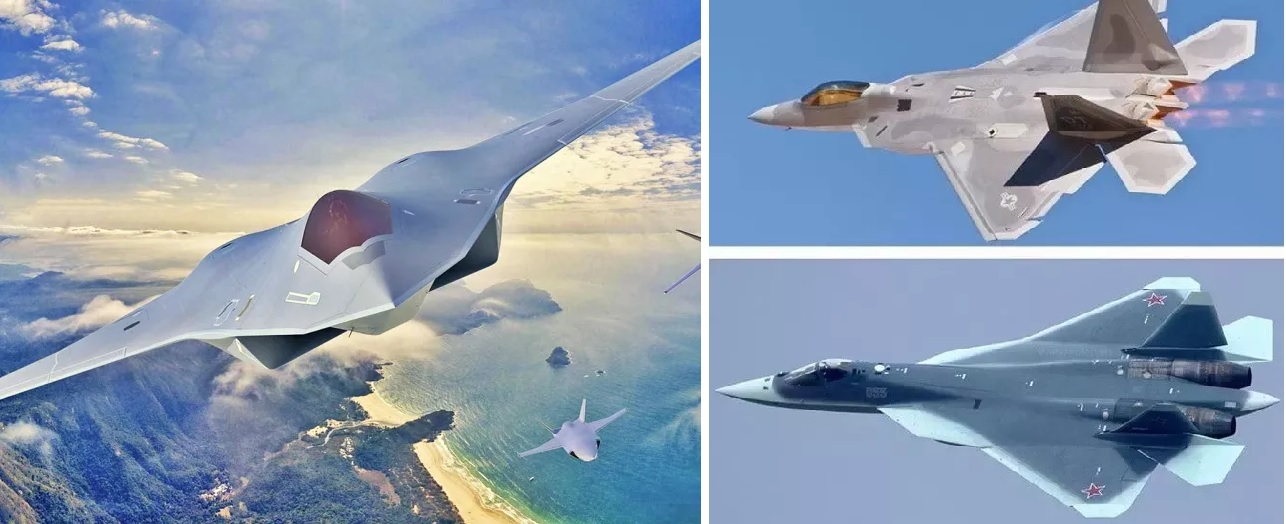 Key Differences Between 5th vs. 6th Generation Fighter Jets
Key Differences Between 5th vs. 6th Generation Fighter Jets
-
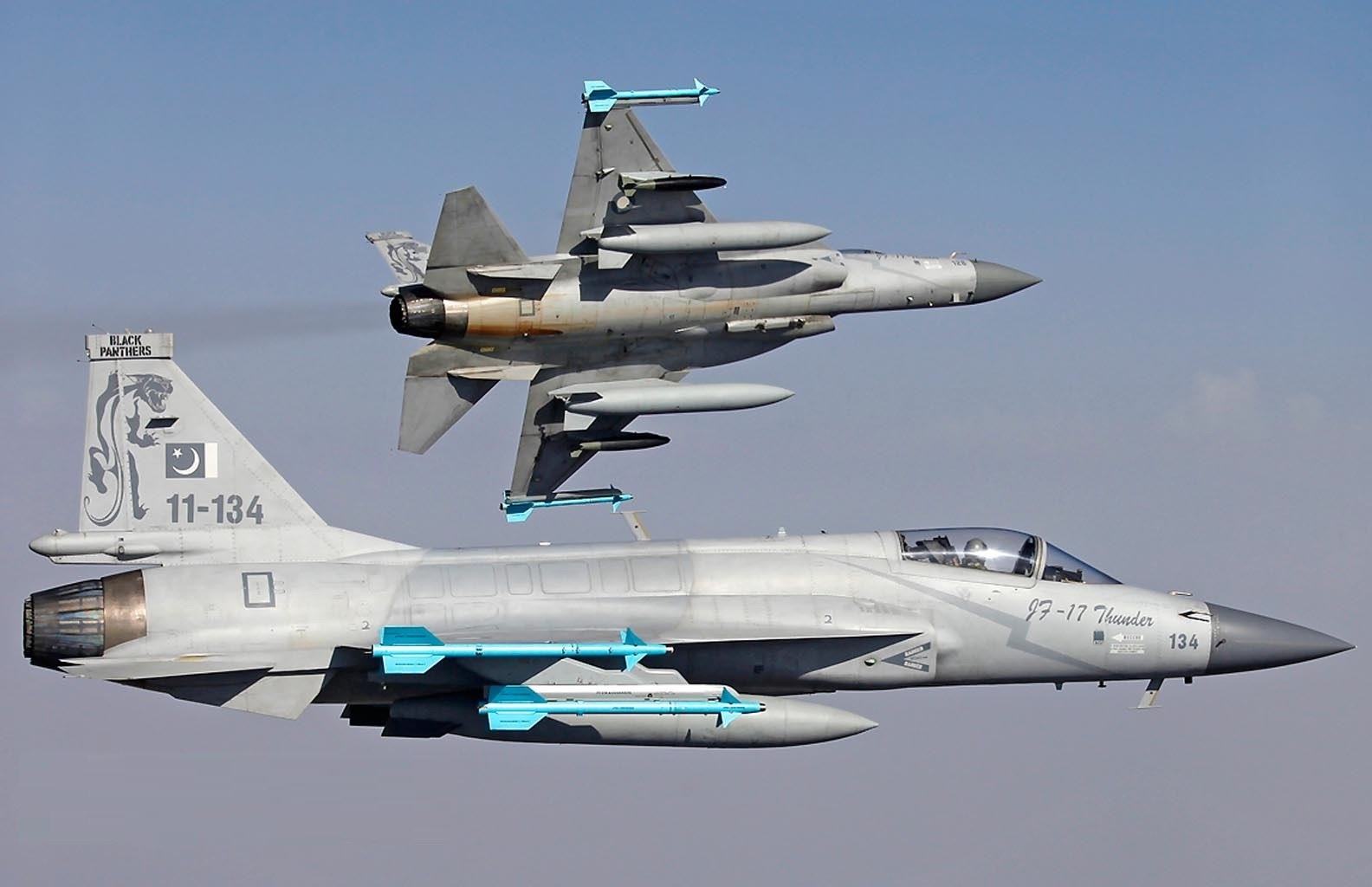 Pakistan Air Force to Unveil Stealth-Enhanced JF-17 Block 4 Fighter Jet by 2028
Pakistan Air Force to Unveil Stealth-Enhanced JF-17 Block 4 Fighter Jet by 2028
-
 India’s AMCA Engine Decision: Safran vs. Rolls-Royce Final Expected by 2025
India’s AMCA Engine Decision: Safran vs. Rolls-Royce Final Expected by 2025
-
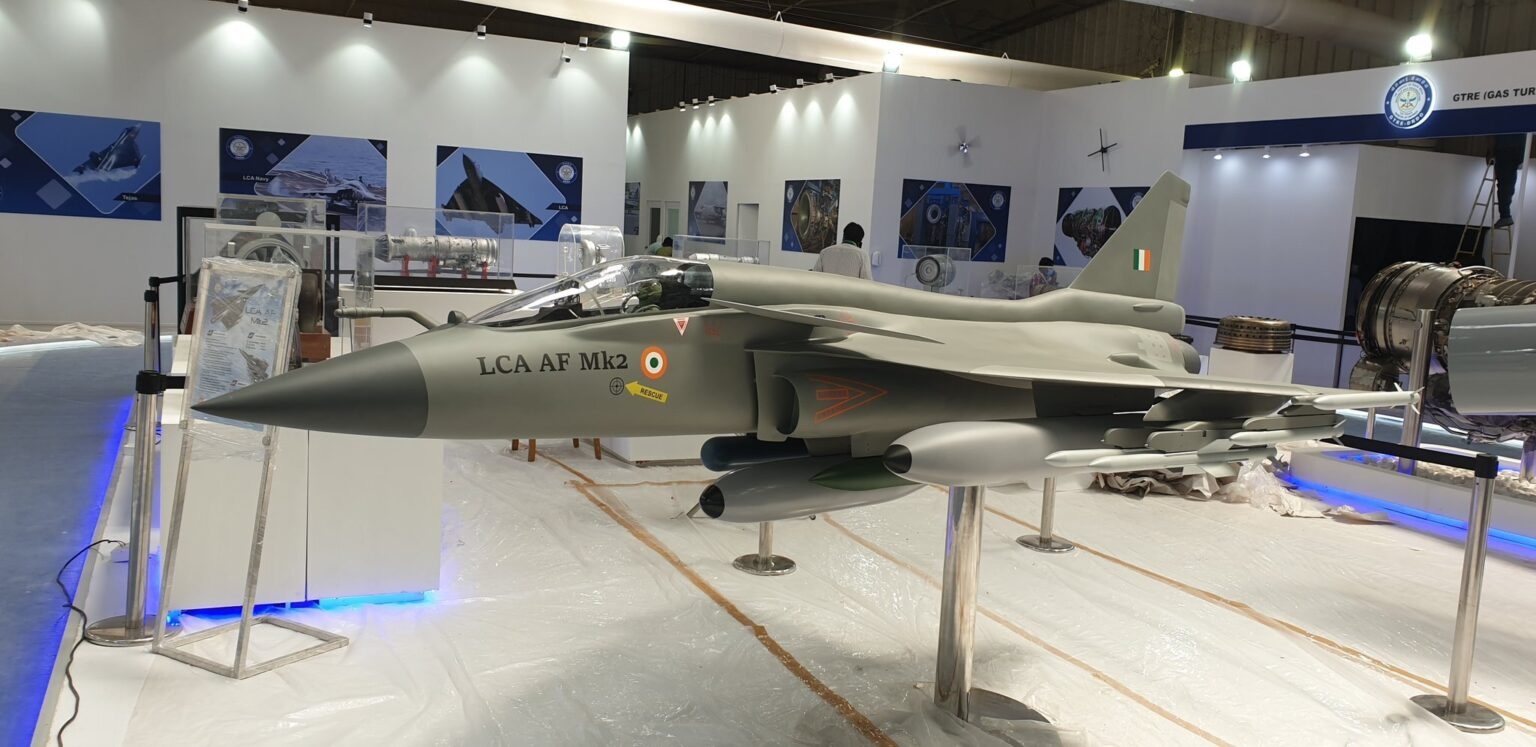 Tejas Mk2 Nears 2025 Rollout as HAL Ramps Up Final Assembly and System Integration
Tejas Mk2 Nears 2025 Rollout as HAL Ramps Up Final Assembly and System Integration
-
 Pakistan Announces 15% Increase in Defence Budget for 2024-25 Amid Economic Crisis
Pakistan Announces 15% Increase in Defence Budget for 2024-25 Amid Economic Crisis
-
 India's TEDBF Program Takes Shape First Flight by 2028: Aiming for Naval Supremacy with Advanced Stealth and Technology
India's TEDBF Program Takes Shape First Flight by 2028: Aiming for Naval Supremacy with Advanced Stealth and Technology
Top Trending in 4 Days
-
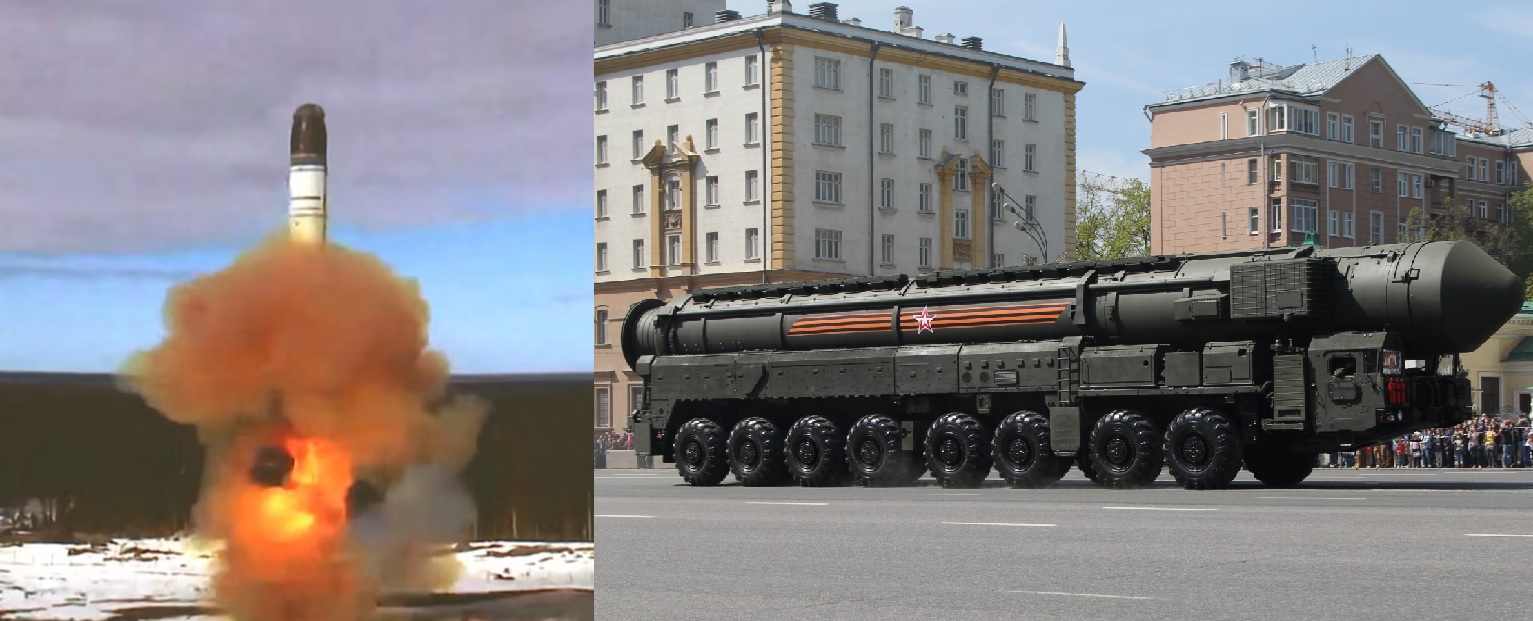 Russia Simulates Full-Scale Nuclear War in Siberia, Deploys Yars ICBMs on Combat Patrols
Russia Simulates Full-Scale Nuclear War in Siberia, Deploys Yars ICBMs on Combat Patrols
-
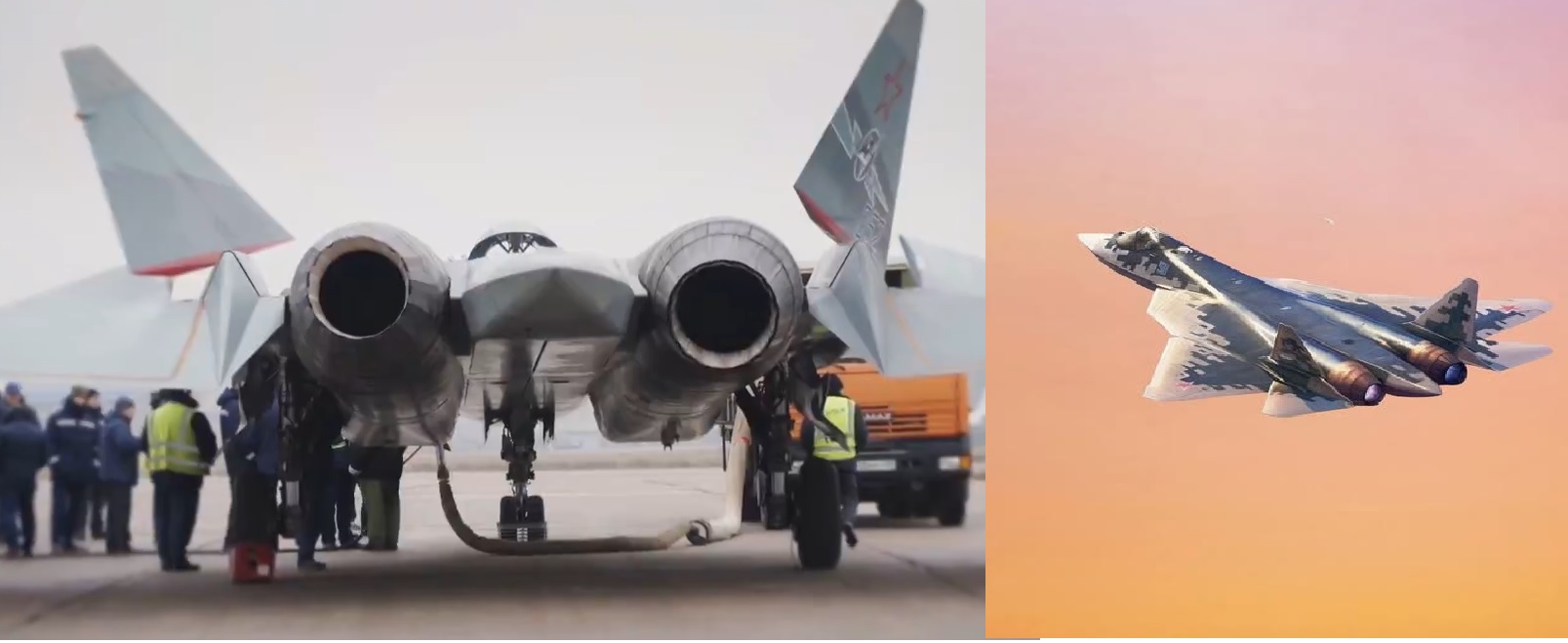 Russian Su-57 Conducts First Flight With Next-Generation Izdeliye-177 Engine
Russian Su-57 Conducts First Flight With Next-Generation Izdeliye-177 Engine
-
 Russian Strike on Mayaki Bridge Threatens Up to 60% of Ukraine’s Fuel Supply
Russian Strike on Mayaki Bridge Threatens Up to 60% of Ukraine’s Fuel Supply
-
 U.S. Seizes China-Linked Oil Tanker Carrying Venezuelan Crude in International Waters
U.S. Seizes China-Linked Oil Tanker Carrying Venezuelan Crude in International Waters
-
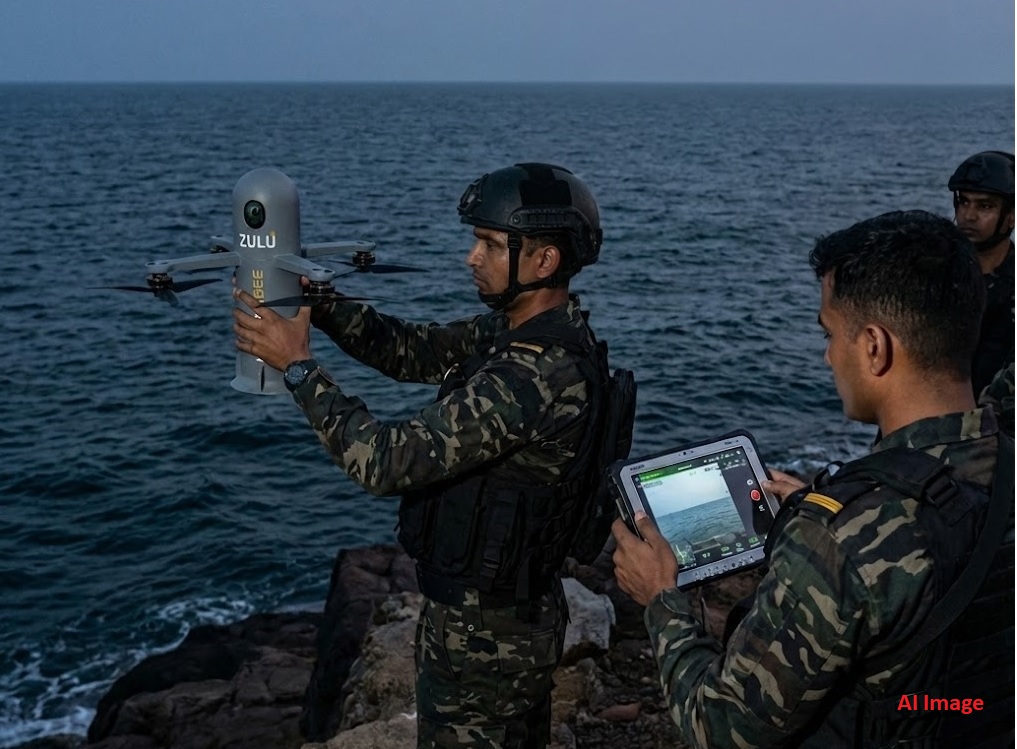 Indian Navy’s MARCOS Induct High-Tech ‘Hoverbee’ Kamikaze Drones for Stealth Operations
Indian Navy’s MARCOS Induct High-Tech ‘Hoverbee’ Kamikaze Drones for Stealth Operations
-
 Russia Brings Back Nuclear-Powered Heavy Cruiser 'Admiral Nakhimov ' After Costly Rebuild
Russia Brings Back Nuclear-Powered Heavy Cruiser 'Admiral Nakhimov ' After Costly Rebuild
-
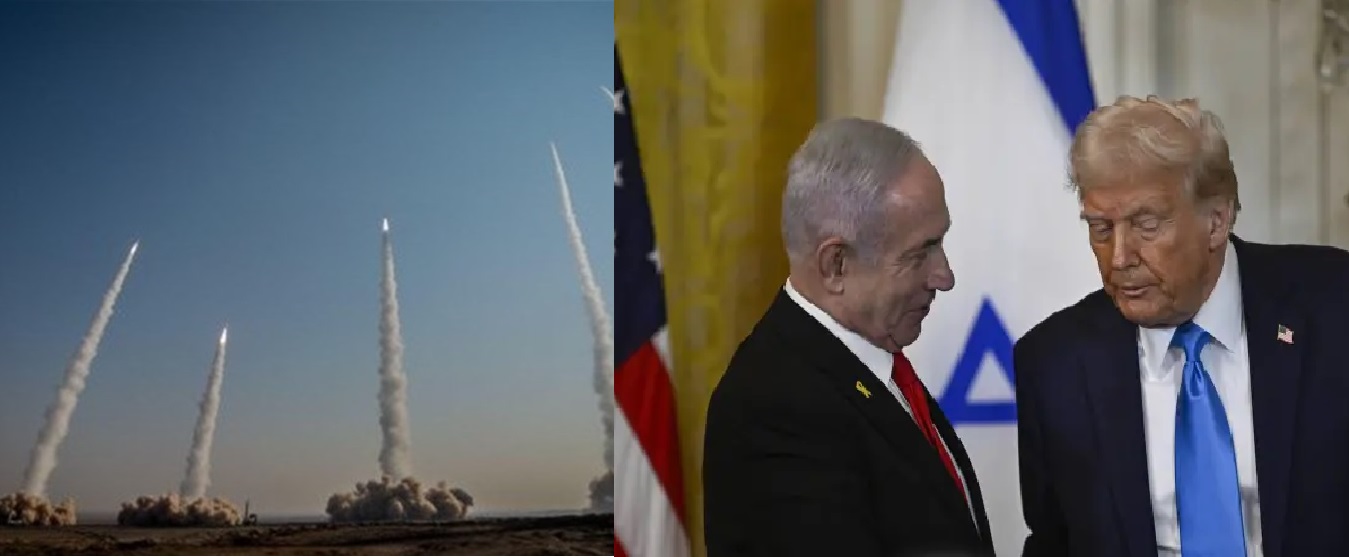 Israel Warns Trump Administration: IRGC Missile Exercise May Mask Surprise Attack Preparations
Israel Warns Trump Administration: IRGC Missile Exercise May Mask Surprise Attack Preparations
-
 India Successfully Tests 3,500-km Range K-4 Submarine-Launched Ballistic Missile From INS Arihant
India Successfully Tests 3,500-km Range K-4 Submarine-Launched Ballistic Missile From INS Arihant












